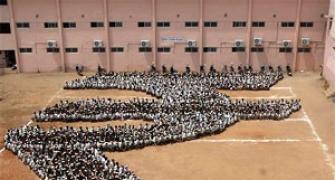The recent meeting of chief justices and chief ministers skirted vital issues, which could have helped in improving the efficiency in the functioning of courts

These are trying times for the apex judiciary. The National Judicial Appointment Commission is set to replace the collegium of judges, which had so far kept out the executive from the selection process. The law is under challenge before a constitution bench and till the validity of the new mechanism is upheld, the appointments of judges of the high courts will hang fire. It will aggravate the situation as there are already hundreds of vacancies in the 24 high courts. Arrears of cases are mounting. The recent conference of chief justices of high courts and chief ministers has not come up with even a small step to hold back the dismal trend.
The Supreme Court had publicised a detailed agenda of the conference held earlier this month, but after the meeting there was little information about the discussions that took place or the resolutions passed on core issues. What has fallen out in drips refers to the long list of demands to hike judges’ salaries, perks and retirement benefits apart from better facilities at tourist and pilgrim centres.
Another bit of information from behind the curtains that has slipped out also avoids the main issues. It is said that the conference has re-issued the 1999 “in-house” procedures for taking “suitable remedial action” against judges accused of misconduct and impropriety. This is again a self-serving measure as several judges are facing sexual harassment and corruption charges.
The agenda consisted of some vital issues that concerned the functioning of the courts, like setting up committees to study and remedy swelling arrears, uniformity and clarity in the data about them, financial independence for the judiciary, strengthening computerisation and implementation of the National Court Management System. Some other important issues, among 24 listed, referred to filling up of high court vacancies, uniform procedure for appointment of district judges, strengthening of the alternative disputes resolution mechanism and building court infrastructure.
However, what happened in the closed-door meeting lasting three days is still a matter of conjecture. This is true to the opaque nature of the judiciary, which earlier resisted disclosure of their income. The public is justified in concluding that no decision worthwhile has been taken on the crucial questions.
A lay person is bound to ask why the court is not taking the easy step by clearing the arrears of cases chronologically. There are cases two decades old and forgotten by the registry and the petitioners. In a recent case involving the Rs 630-crore penalty imposed on DLF Ltd, the presiding judge wondered why the registry put it up for early hearing. They asked when people are rotting in jail for years, how can a corporate appeal of last year be taken up so soon?
The court has taken judicial notice of this phenomenon. As early as in 1987, in the case of D Navinchandra vs Union of India (1987), the then chief justice wrote: “My conscience protests to me that when thousands of remediless wrongs await in the queue for this court’s intervention and solution for justice, petitions at the behest of diamond exporters and dry fruit exporters where large sums are involved should be admitted and disposed of by this court at such quick speed.”
Another phenomenon that would mystify a visitor is the adjournments granted so easily, most often to suit the convenience of the lawyers. Again, in the words of the Supreme Court itself, “it is distressing to note that despite a series of judgments of this court, the habit of granting adjournment, really an ailment, continues. How long shall we say, “Awake! Arise!” (Vinod Kumar vs State of Punjab).
Yet another glaring practice that would baffle a visitor is the apparently interminable arguments taking the precious time of the court. Strolley-loads of old judgments are brought to the court by all sides and they are read in the droning voice of the aged counsel. It is said that the US Supreme Court allows only half an hour for each side and the Common Law countries draw up a tight schedule for arguments. Any reasonable person, if admitted to the august judicial conference just concluded in Delhi, could have given some common sense advice as jotted down above to improve the working of the court.










